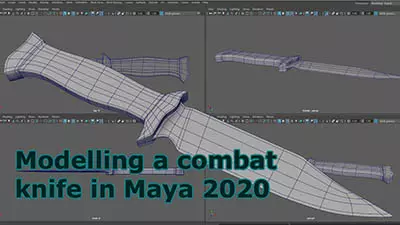Integrating 3D models with photography
Interested in integrating your 3D work with the real world? This might help
#
1
05-12-2011
, 05:46 PM
Registered User
Join Date: Nov 2011
Join Date: Nov 2011
Location: Ireland
Posts: 29
polygon plane used for image plane issues
The big problem i'm having is getting the image to scale properly on the polygon plane. The method in the book requires you to scale the polygon plane to the same aspect ratio as the source image used in the lambert's color texture. Problem is that it's not working at all for me. Should i just use regular image planes instead or is there a lot of advantages to using polygon planes?
thanks.
#
2
05-12-2011
, 11:31 PM
EduSciVis-er
Join Date: Dec 2005
Join Date: Dec 2005
Location: Toronto
Posts: 3,374
#
3
05-12-2011
, 11:41 PM
Edit:Stwert snap

Avatar Challenge Winner 2010
Last edited by daverave; 05-12-2011 at 11:50 PM.
#
4
06-12-2011
, 11:25 AM
Registered User
Join Date: Nov 2011
Join Date: Nov 2011
Location: Ireland
Posts: 29
#
5
06-12-2011
, 12:20 PM
Then create a lambert and click on the checkered box to the right of the color slot (see image marked 2) in this shot I already have set the file for the color so there is a black arrow where the checkered box would be.
Then browse to the image file (see image marked 3)
Then assign the lambert to the poly plane
Then AND THIS IS VERY IMPORTANT go to the poly plane creation node and drop down the create uv's box and set normalization off. Otherwise you will not always get the proper coverage. (see image marked 4)
"If I have seen further it is by standing on the shoulders of giants." Sir Isaac Newton, 1675
Last edited by ctbram; 06-12-2011 at 12:22 PM.
#
6
06-12-2011
, 08:39 PM
Registered User
Join Date: Nov 2011
Join Date: Nov 2011
Location: Ireland
Posts: 29
Also CT i'm going to link a drawing for my final class project. I'd like you to tell me what modeling approach would be easiest, it doesn't need to be super accurate. I'm not really ready for patch modelling. I even thought of extruding the front view shape along a path as you did in your keg video. I started off importing a series of curves from illustrator. I was going to loft a cross section of it, but maybe just polygon modelling with smoothing would be best for a beginner. But yeah if you could just tell me what approach would be the easiest for my drawings. Again the model doesn't have to be super accurate, it's an intro class.
I put a link up because the image attachments seem to get wiped fairy quickly.
project drawings
thanks
-Kevin
#
7
06-12-2011
, 10:23 PM
I looked at your reference image. It kind of depends on what was taught in you course and the method that the instructor expects you to use.
"If I have seen further it is by standing on the shoulders of giants." Sir Isaac Newton, 1675
#
8
06-12-2011
, 10:28 PM
Registered User
Join Date: Nov 2011
Join Date: Nov 2011
Location: Ireland
Posts: 29
#
9
06-12-2011
, 10:36 PM
You could loft a set of section curves like the fuse from this thread https://simplymaya.com/forum/showthread.php?t=35873
Or you could start from a cylinder and model the right side of the body shape from that.
Or you could draw a curve along the top profile and the bottom and loft between those two curves and then add edge loops one at a time and message them using the top and front image as a guide.
But I think the easiest for a beginner would be start with a plane at the front and then extrude it back along the length of the body adjusting the verts to the image planes as you go. Adjust the verts at the top, and bottom, and belt line first as you can see those in silhouette from the reference images and the in between edges you will have to just adjust by feel.
I don't want to go into to much detail as this is a school project. But if the teacher has not demonstrated any of this stuff I am not sure how you are supposed to figure it out without asking for help from someplace or looking for tuts online.
"If I have seen further it is by standing on the shoulders of giants." Sir Isaac Newton, 1675
Last edited by ctbram; 06-12-2011 at 11:11 PM.
#
10
08-12-2011
, 03:56 AM
Registered User
Join Date: Nov 2011
Join Date: Nov 2011
Location: Ireland
Posts: 29
#
11
08-12-2011
, 05:06 AM
"Then AND THIS IS VERY IMPORTANT go to the poly plane creation node and drop down the create uv's box and set normalization off."ctbram, I did not know this. I just used to adjust the uv to fill the full 0,0 to 1,1 range.
Posting Rules Forum Rules
Similar Threads
Polygon plane crashes Mental Ray (fatal..null DB tag)
by jttraverse in forum Lighting & Rendering replies 0 on 15-05-2015
Create polygon tool
by Srkukali in forum Maya Basics & Newbie Lounge replies 0 on 23-01-2014
import image to polygon plane
by aerende in forum Maya Basics & Newbie Lounge replies 2 on 05-08-2009
Trying to get an image onto a polygon plane
by ninogan in forum Maya Basics & Newbie Lounge replies 4 on 10-05-2009
Polygon Image Plane
by ZeJudge in forum Maya Technical Issues replies 3 on 19-03-2006
Topics
Free Courses
Full Courses
VFX News
How computer animation was used 30 years ago to make a Roger Rabbit short
On 2022-07-18 14:30:13
Sneak peek at Houdini 19.5
On 2022-07-18 14:17:59
VFX Breakdown The Man Who Fell To Earth
On 2022-07-15 13:14:36
Resident Evil - Teaser Trailer
On 2022-05-13 13:52:25
New cloud modeling nodes for Bifrost
On 2022-05-02 20:24:13
MPC Showreel 2022
On 2022-04-13 16:02:13










